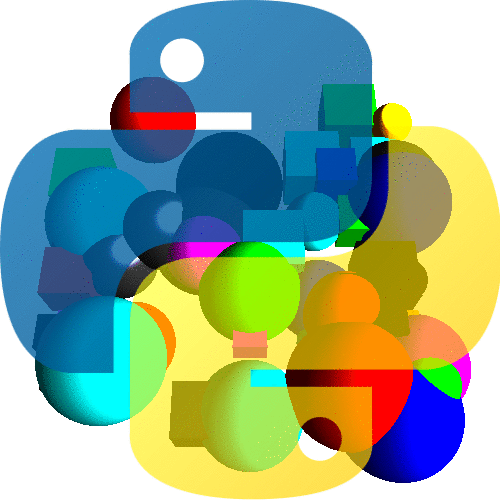Catherine Holloway, Qubitekk
Catherine Holloway (@femion, CatherineH)

angle = 0def setup():size(640, 480, P3D)def draw():global angleclear()translate(320, 240)rotate(angle, 1, 1, 0)fill(255, 0, 0)box(100)angle += PI/100.0
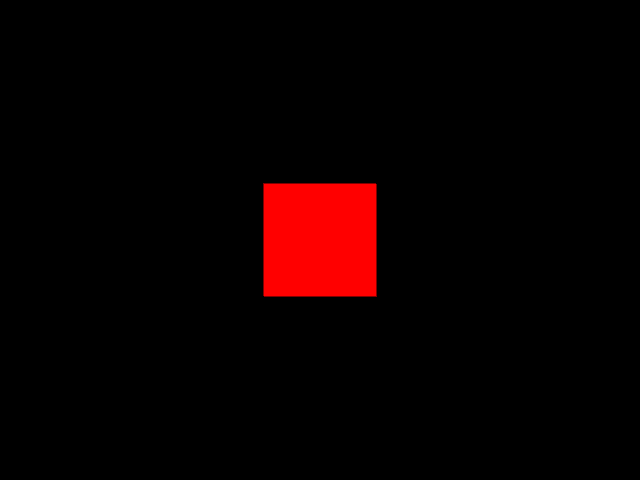

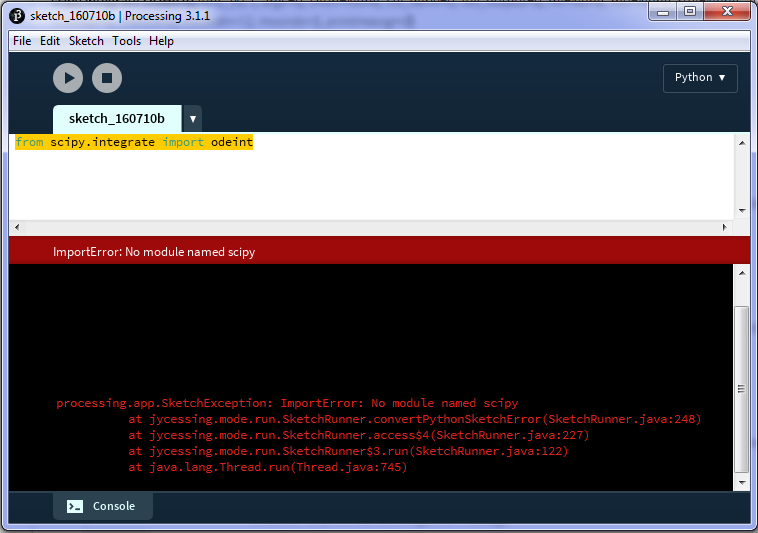

 PyOpenGL is to OpenGL as PyQt is to Qt
PyOpenGL is to OpenGL as PyQt is to Qt
from OpenGL.GL import *from OpenGL.GLUT import *from OpenGL.GLU import *
def InitGL(Width, Height):glClearColor(0.0, 0.0, 0.0, 0.0)glClearDepth(1.0)glDepthFunc(GL_LESS)glEnable(GL_DEPTH_TEST)glShadeModel(GL_SMOOTH)glMatrixMode(GL_PROJECTION)glLoadIdentity()gluPerspective(45.0, Width / Height, 0.1, 100.0)glMatrixMode(GL_MODELVIEW)
def DrawGLScene():global angleglLoadIdentity()glRotatef(angle, 1.0, 1.0, 0.0)glBegin(GL_QUADS)glColor3f(1.0, 0.0, 0.0)glVertex3f(1.0, 1.0, -1.0)glVertex3f(-1.0, 1.0, -1.0)glVertex3f(-1.0, 1.0, 1.0)glVertex3f(1.0, 1.0, 1.0)...glEnd()angle += 1
def DrawGLScene():global angleglLoadIdentity()glRotatef(angle, 1.0, 1.0, 0.0)glBegin(GL_QUADS)glColor3f(1.0, 0.0, 0.0)glVertex3f(1.0, 1.0, -1.0)glVertex3f(-1.0, 1.0, -1.0)glVertex3f(-1.0, 1.0, 1.0)glVertex3f(1.0, 1.0, 1.0)glColor3f(1.0, 0.0, 0.0)glVertex3f(1.0, -1.0, 1.0)glVertex3f(-1.0, -1.0, 1.0)glVertex3f(-1.0, -1.0, -1.0)glVertex3f(1.0, -1.0, -1.0)glColor3f(0.0, 1.0, 0.0)glVertex3f(1.0, 1.0, 1.0)glVertex3f(-1.0, 1.0, 1.0)glVertex3f(-1.0, -1.0, 1.0)glVertex3f(1.0, -1.0, 1.0)
glColor3f(1.0, 1.0, 0.0)glVertex3f(1.0, -1.0, -1.0)glVertex3f(-1.0, -1.0, -1.0)glVertex3f(-1.0, 1.0, -1.0)glVertex3f(1.0, 1.0, -1.0)glColor3f(0.0, 0.0, 1.0)glVertex3f(-1.0, 1.0, 1.0)glVertex3f(-1.0, 1.0, -1.0)glVertex3f(-1.0, -1.0, -1.0)glVertex3f(-1.0, -1.0, 1.0)glColor3f(1.0, 0.0, 1.0)glVertex3f(1.0, 1.0, -1.0)glVertex3f(1.0, 1.0, 1.0)glVertex3f(1.0, -1.0, 1.0)glVertex3f(1.0, -1.0, -1.0)glEnd()angle += 1
glutInit(sys.argv)glutInitDisplayMode(GLUT_RGBA | GLUT_DEPTH)glutInitWindowSize(Width, Height)glutCreateWindow()glutDisplayFunc(DrawGLScene)glutIdleFunc(DrawGLScene)InitGL(Width, Height)glutMainLoop()
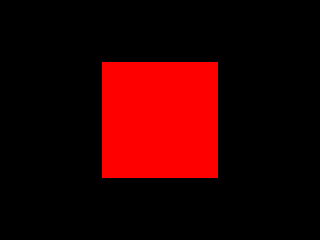



Also a python OpenGL binding, but simplifies windowing and multimedia
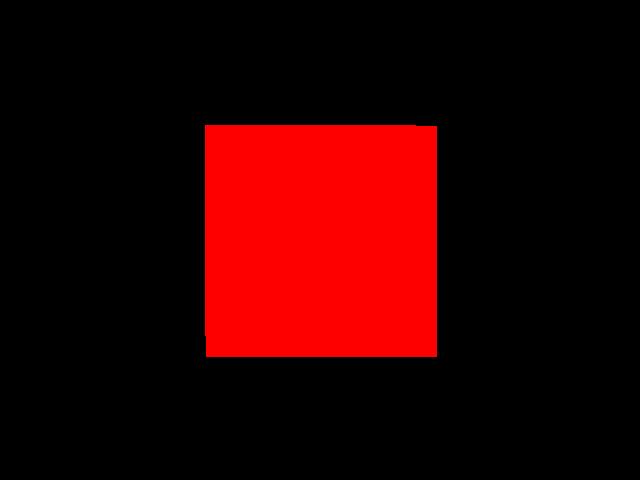
from pyglet.gl import *from pyglet import clock, window
def update(dt):global angleangle += 1win = window.Window(height=Height, width=Width)pyglet.clock.schedule(update)clock.set_fps_limit(30)pyglet.app.run()

@win.eventdef on_resize(width, height):glClearColor(0.0, 0.0, 0.0, 0.0)glClearDepth(1.0)glEnable(GL_DEPTH_TEST)glShadeModel(GL_SMOOTH)glMatrixMode(GL_PROJECTION)glLoadIdentity()gluPerspective(45.0, Width / Height, 0.1, 100.0)glMatrixMode(GL_MODELVIEW)return pyglet.event.EVENT_HANDLED
@win.eventdef on_draw():global angleglLoadIdentity()glTranslatef(0.0, 0.0, -6.0)glRotatef(angle, 1, 1, 0)glBegin(GL_QUADS)glColor3f(1.0, 0.0, 0.0)glVertex3f(1.0, 1.0, -1.0)glVertex3f(-1.0, 1.0, -1.0)glVertex3f(-1.0, 1.0, 1.0)glVertex3f(1.0, 1.0, 1.0)...

ball = sphere(pos=vector(-10, 0, 0), radius=0.1,color=color.red, make_trail=True)ball.velocity = vector(10, 10, 0)time = 0.0; time_final = 2; dt = 0.01; m = 0.15while time <= time_final and ball.pos.y > -0.1:rate(100)f = - m * vector(0, 9.8, 0)ball.pos += ball.velocity * dtball.velocity += f * dt / mtime += dt
ball = sphere(pos=vector(-10, 0, 0), radius=0.1,color=color.red, make_trail=True)ball.velocity = vector(10, 10, 0)time = 0.0; time_final = 2; dt = 0.01; m = 0.15while time <= time_final and ball.pos.y > -0.1:rate(100)f = - m * vector(0, 9.8, 0)-0.006 * ball.velocity * ball.velocity.magball.pos += ball.velocity * dtball.velocity += f * dt / mtime += dt
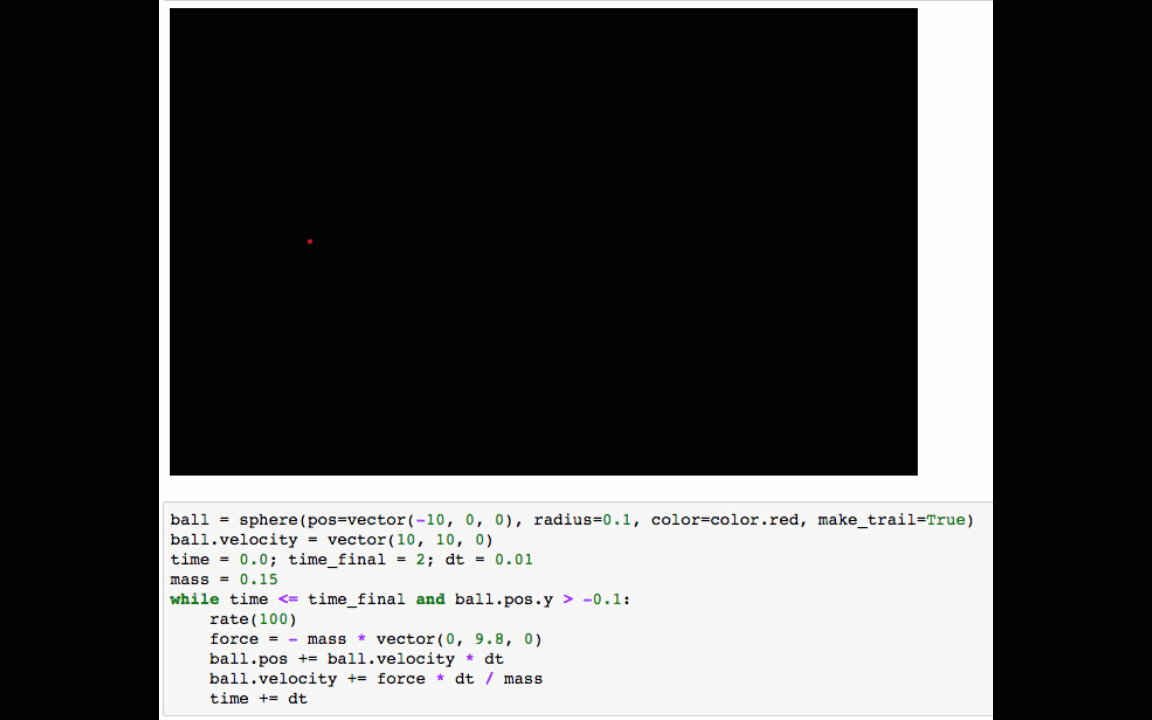
from visual import *a_box = box(width=1, height=1, length=1, color=color.red)while True:rate(10)a_box.rotate(angle=radians(1), axis=vector(1, 1, 0))




| Feature | PyOpenGL | pyglet |
|---|---|---|
| GLUT | yes | no |
| GLext | yes | no (experimental) |
| 3.5 support | yes (not official) | no |
explicit vector( double a = 0.0, double b = 0.0,double c = 0.0) throw(): x(a), y(b), z(c) {}inline explicit vector( const double* v): x(v[0]), y(v[1]), z(v[2]) {}
def __init__(self, in_vector=None):if in_vector is None:self.zero()elif len(in_vector) > 2:for i in range(len(self)):self[i] = in_vector[i]else:raise ValueError("in_vector must contain ""at least three numbers!")
box() became Box()vector.x became Vector.x_component, or Vector[0]
OpenGL requires a display to draw to, but Travis-CI runs on a headless server!
@patch('pyglet_helper.objects.box.gl',new=pyglet_helper.test.fake_gl)def test_box_generate_model():from pyglet_helper.objects import Boxbox = Box()box.generate_model()
def glVertex3f(x_component, y_component, z_component):pass
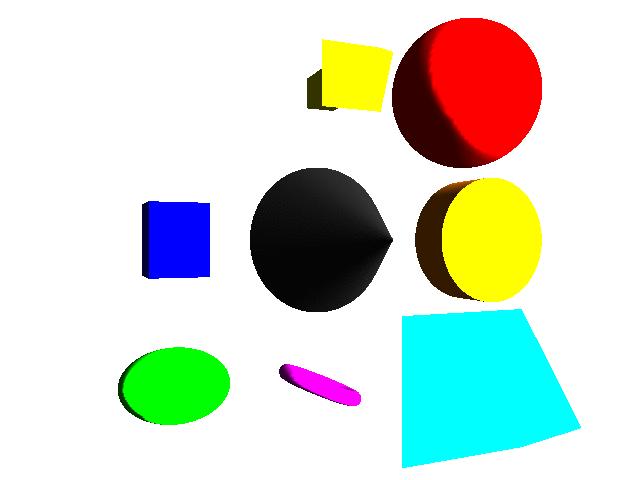
my_box = Box()my_scene = View()my_box.render(my_scene)
or
my_scene.objects.append(my_box)my_scene.setup()
from pyglet_helper import *vsetup()box = objects.Box(size=(1, 1, 1), color=util.RED)def update(dt):box.rotate(angle=radians(1),axis=util.Vector([1, 1, 0]))vrun(update, render_images=True, max_frames=180)
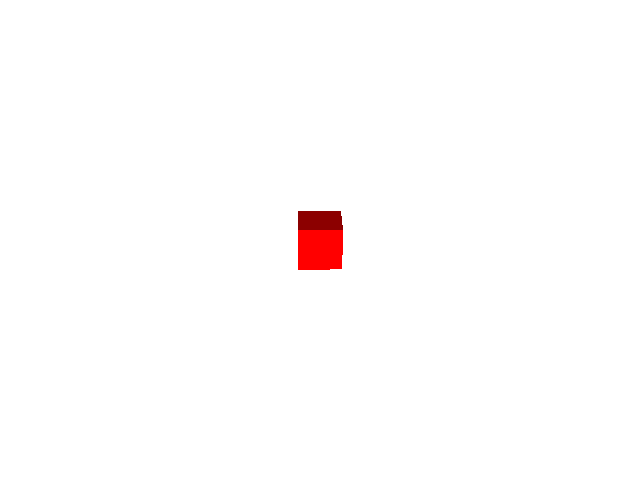
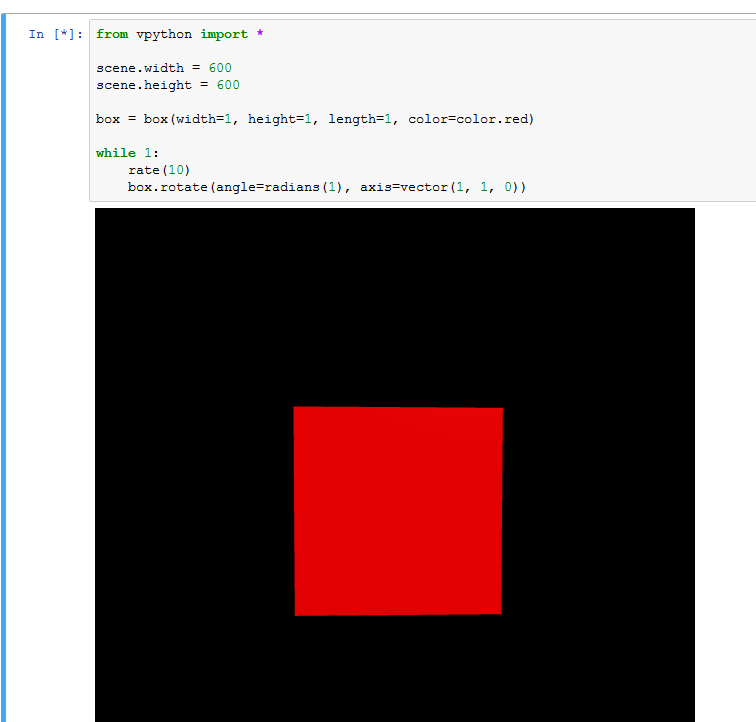
from vispy import app, scenefrom vispy.visuals import transformscanvas = scene.SceneCanvas(keys='interactive')view = canvas.central_widget.add_view()def update(dt):global cubecube.transform.rotate(1, (1, 1, 0))cube = scene.visuals.Cube(color='red', edge_color="k")cube.transform = transforms.MatrixTransform()view.add(cube)view.camera = scene.TurntableCamera()canvas.show()timer = app.Timer('auto', connect=update, start=True)canvas.app.run()

